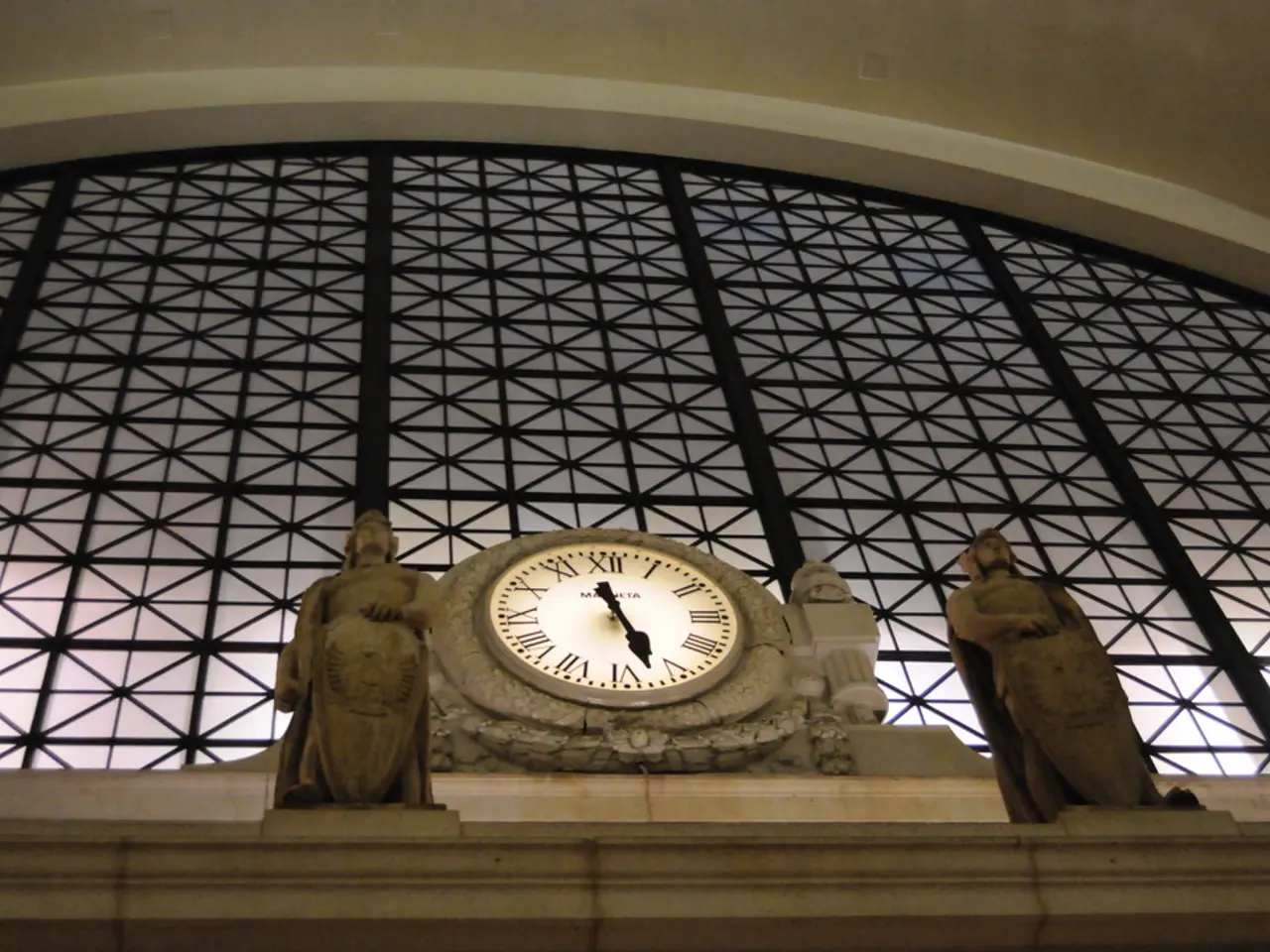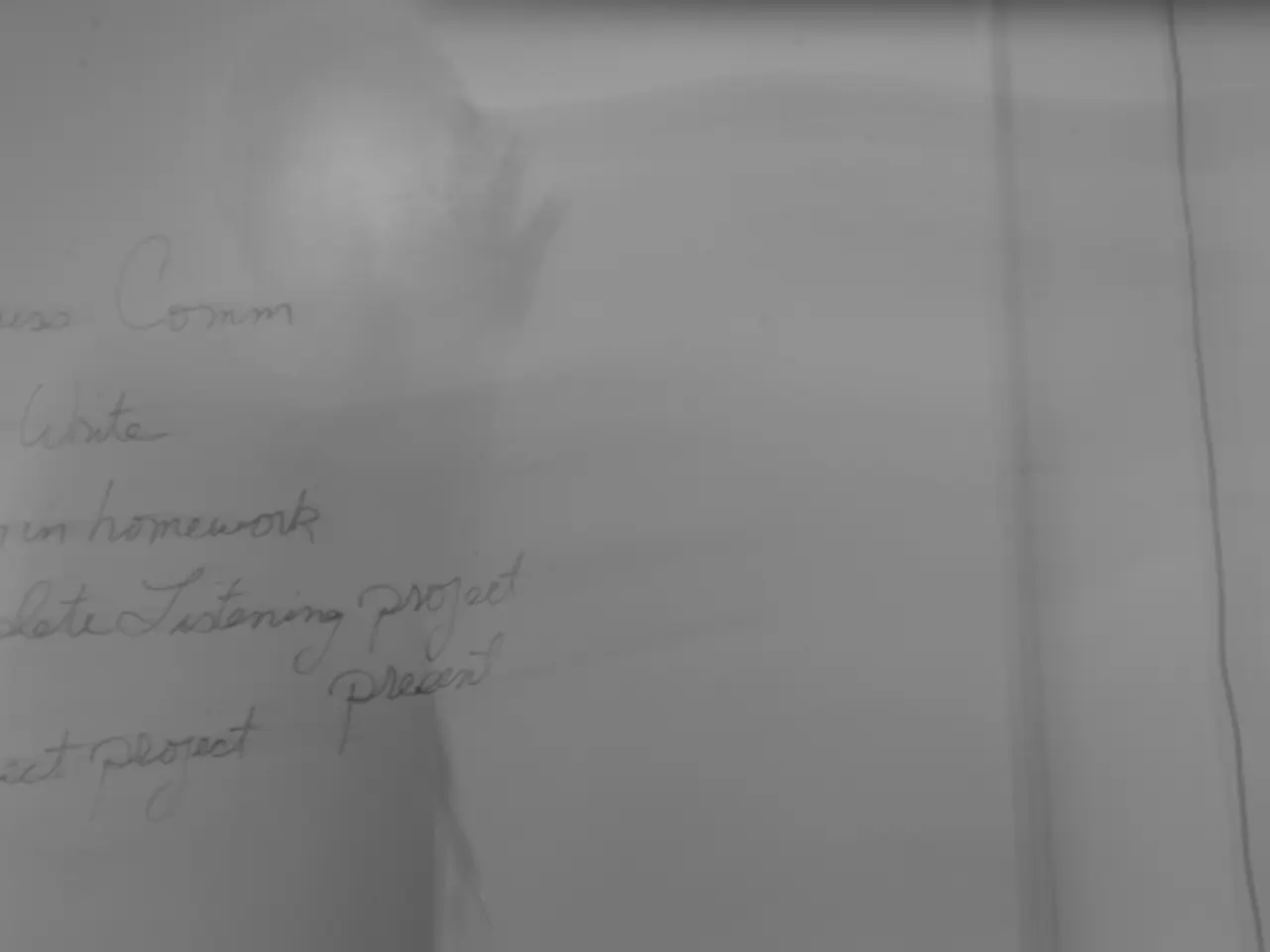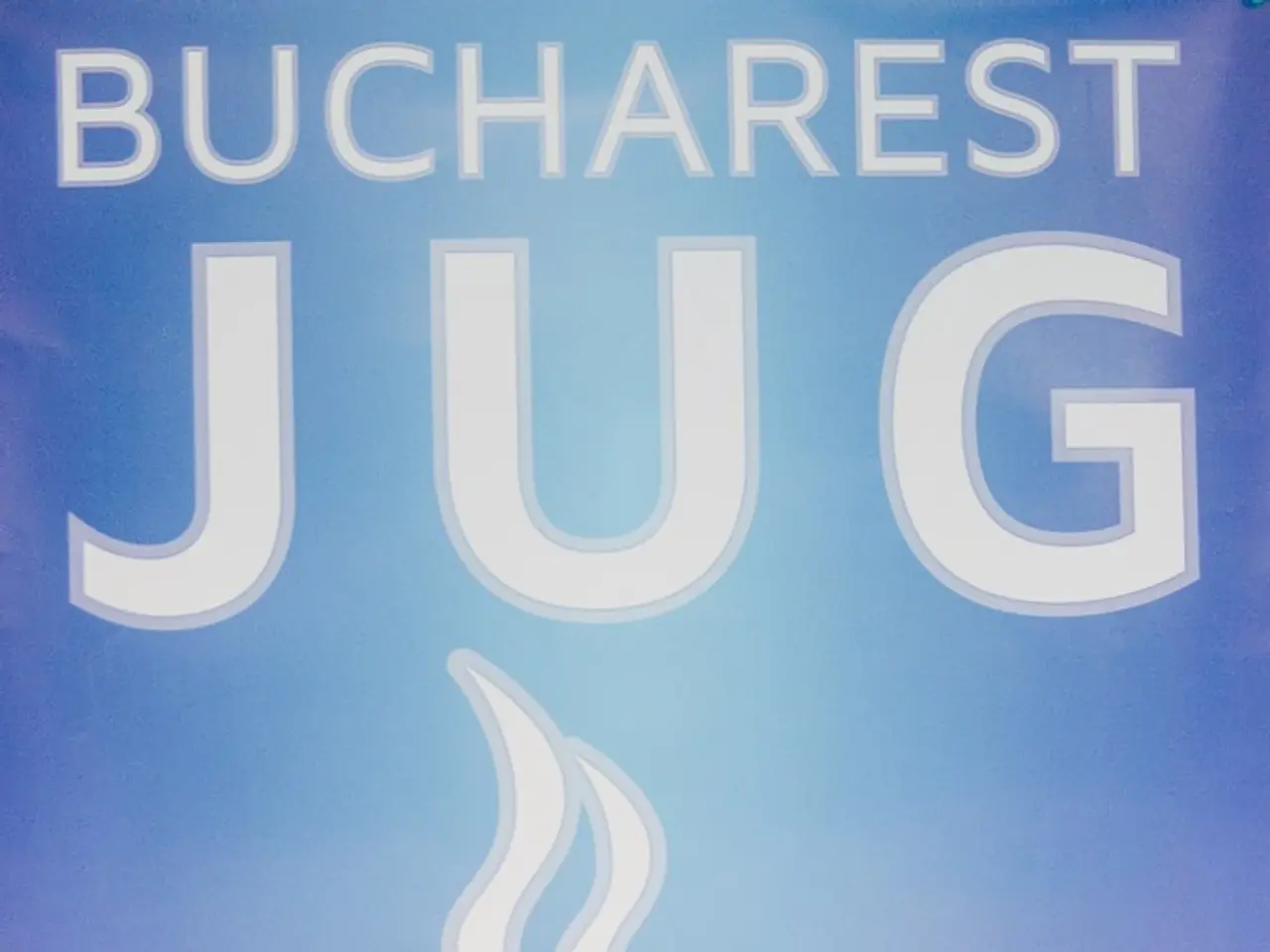Syrian-style Ansonia Parlor Clock Continuation
In the heart of a workshop, a rare and intricate piece of history comes to life - a machine-carved oak Ansonia Syria parlour clock from the late 19th century, showcasing the Arts and Crafts style. This clock, crafted in the early to mid-1890s, was in need of a thorough restoration.
Disassembly
The first step in the restoration process was careful disassembly. The clock was removed from its case, and the hands were gently removed by pulling or unscrewing the center nut. The dial, if necessary, was taken out as it was usually held by screws. The heart of the clock - the movement - was then carefully extracted.
Cleaning
Each mainspring was cleaned with a Scotchbright pad, WD-40, and an ultrasonic cleaner. The gears, pivots, and plates were cleaned using a clock cleaning solution or an appropriate mild solvent. The case wood was cleaned with gentle wood cleaner, and a polish was applied if necessary.
Movement Inspection
The cleaned movement was inspected for any signs of wear or damage. The protruding bushing on the inside of the plate was filed down to allow the strike side to run smoothly. Pivot polishing was performed using a #11 Emory board on a Taig metal lathe. Two bushings were needed for the movement during reassembly.
The movement appeared to be in good condition, with minor wear on the flywheel lantern pinions being the only exception. The stop pin was re-positioned to restore the functioning of the strike side. However, the strike side gears were not moving after reassembly due to a bushing that was too tall for the plate.
Lubrication
After cleaning and drying, a small amount of clock oil was applied to pivots and gear teeth. The mainsprings, found to be in good condition and reusable, were lubricated with mainspring oil.
Reassembly
The movement was carefully reinstalled into the case. The third screw was attached to the time side wheels and the hour gear. A pivot locator was used during reassembly of the movement. All screws were tightened after working the wheels and levers into place on both sides.
Testing and Adjustments
The clock was set on a level surface and tested. The pendulum (if present) and escapement were checked for proper operation. Adjustments were made to the beat and timing as needed for proper operation.
Final Thoughts
Because of the historical value of the Ansonia Syria model, it is recommended to approach servicing carefully or to consult or hire a professional clockmaker experienced in antique American clocks for detailed work or parts replacement. Antique clock forums or specialized horology books on Ansonia clocks would be valuable resources for step-by-step photos or manuals.
In summary, the restoration process involved careful disassembly, gentle cleaning, thorough inspection of mechanical parts, proper lubrication, and careful reassembly with timing adjustments. Following standard late 19th-century American clock servicing protocols was advisable, as specific instructions for the Syria model were not readily available. The owner left instructions to leave the case as-is, but the case was not refreshed in this restoration process. The clock now stands, ticking away, a testament to the craftsmanship of a bygone era.
During the restoration process, the vintage Ansonia Syria parlour clock underwent careful disassembly and smart-home devices like the ultrasonic cleaner were utilized for cleaning the movement. Upon completion of the restoration, the clock was placed back in its original Oak case, demonstrating the seamless integration of technology with gadgets from the past, combining the beauty of vintage clocks with the intricacies of modern clock servicing. The fully restored clock, now ticking away, serves as a symbol of the intersection between technology and the Arts and Crafts style in the late 19th century.




